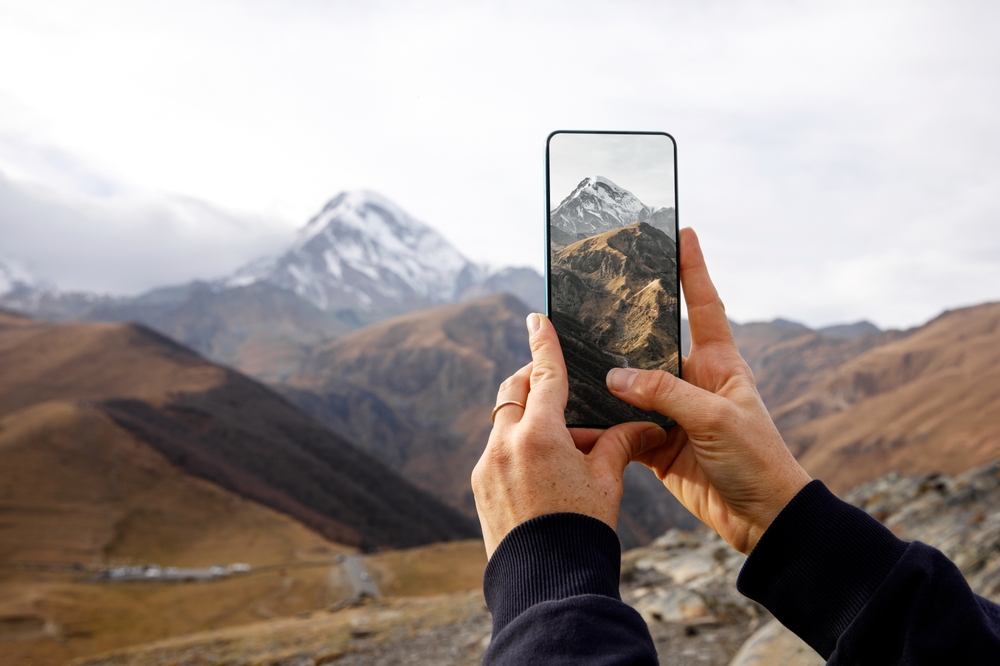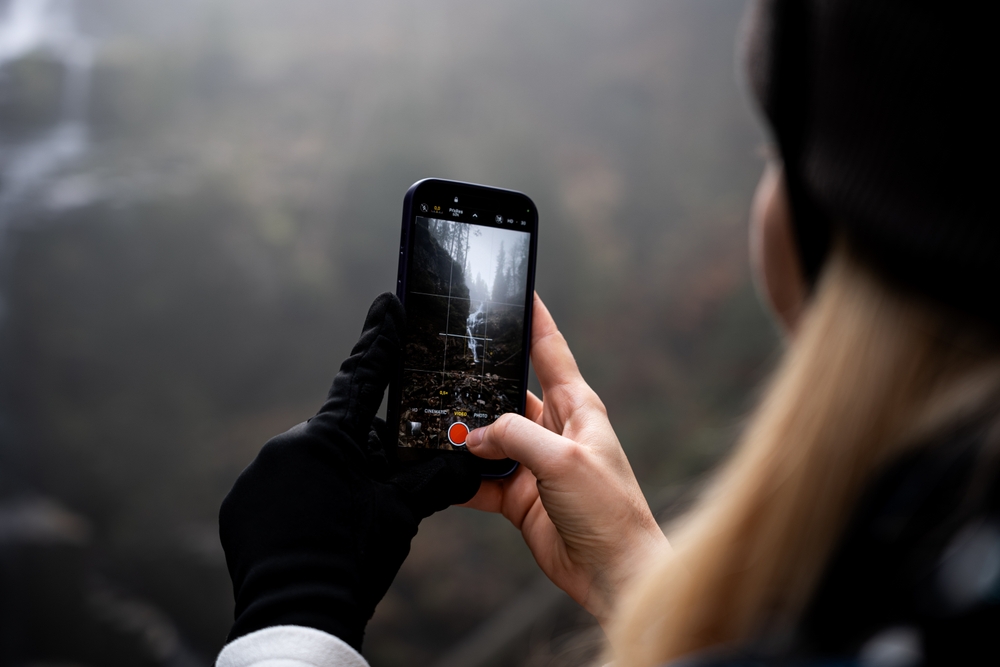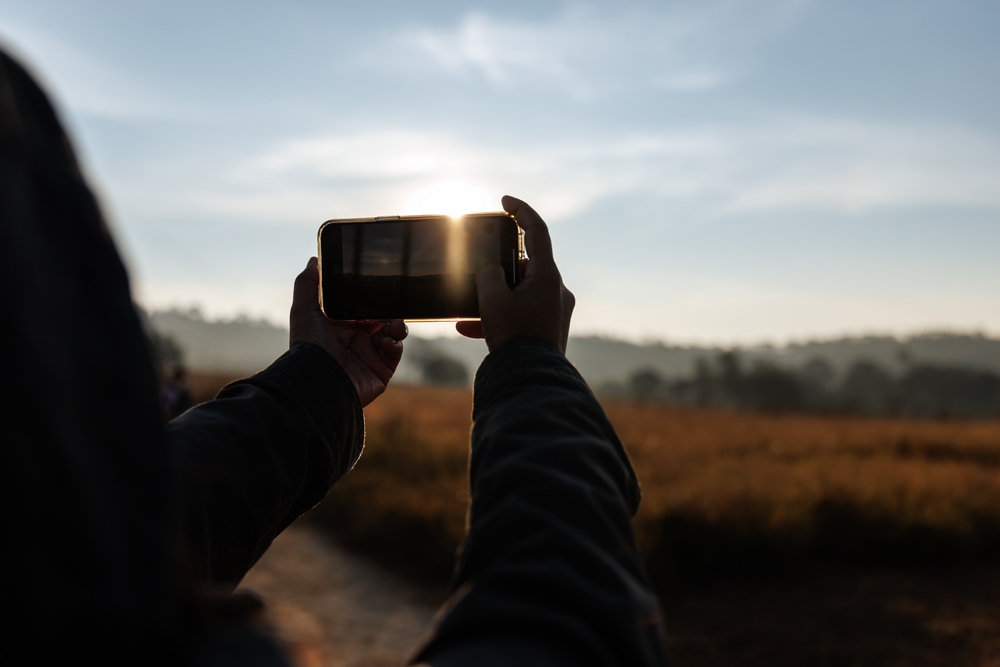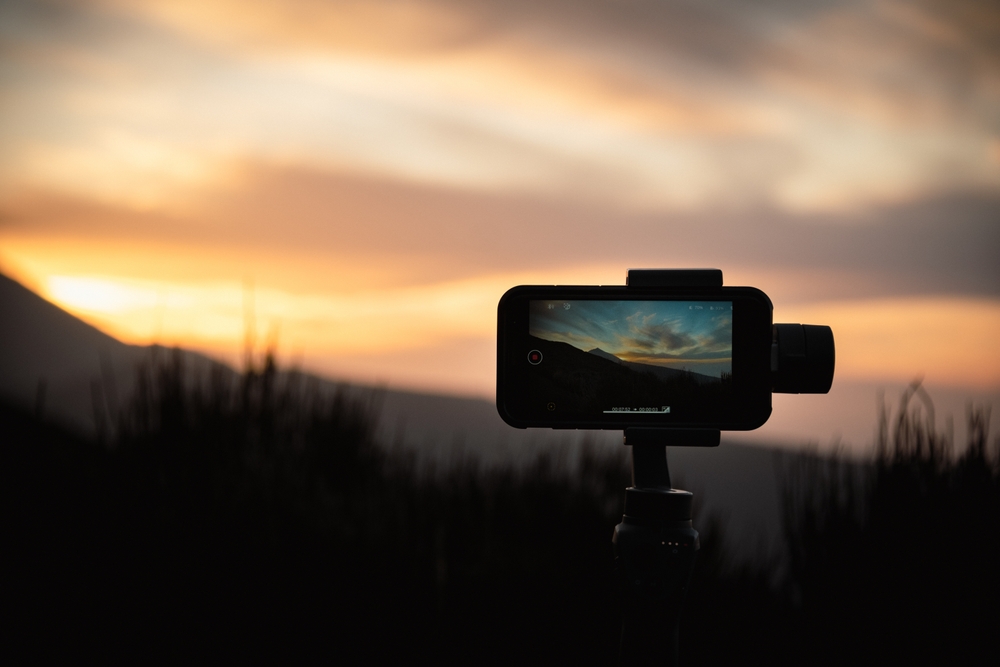Smartphones have replaced dedicated cameras for millions of photographers, adventurers, parents, travelers, and creators. We pull them out in downpours, deserts, beaches, ski lifts, trail summits, crowded streets—everywhere life happens. The phone itself is often water-resistant, drop-tested, and surrounded by rugged cases. But the camera lenses? Still fully exposed. That tiny glass circle capturing your best moments is the most unprotected part of your device.
Here’s the frustrating truth: when a photo looks soft, hazy, speckled, or smudged, we blame lighting, motion, or the sensor. Most of the time, the culprit is something far less dramatic—dust, moisture, fingerprints, salt mist, grime, or micro-abrasions on the lens. And while we wipe, buff, and polish like that will fix it, constant cleaning actually increases wear and makes matters worse. The goal shouldn’t be cleaning more. It should be protecting better.
This guide breaks down real phone camera protection that works in the field—not in a marketing brochure. We’ll explore threats in every environment, smarter protection habits, the pros and cons of common solutions, and an option that doesn’t block, blur, or interfere with your shots. Whether you’re documenting daily life or scaling a muddy backcountry road, this is how you keep your images crisp and your lenses safe.
Table of Contents
- Why Your Phone’s Camera Lens Is More Vulnerable Than You Think
- Most Common Camera Threats (and When They Happen)
- Everyday Lens Protection Habits
- Phone Camera Protection for Every Shooting Environment
- Lens Protection Types & Their Tradeoffs
- The Case for Over-Lens Phone Camera Protection
- Camera Canopy for Mobile: Smarter Phone Camera Protection
- How to Use the Camera Canopy in the Field
- Build a Minimal Phone Camera Protection Kit
- Shoot Longer, Wipe Less, Protect More
- FAQ
Why Your Phone’s Camera Lens Is More Vulnerable Than You Think

Photo by Vershinin89 via Shutterstock
Smartphone bodies have become tougher, sleeker, and more durable. Manufacturers load them with drop protection, water resistance, ceramic shielding, and impact-absorbing materials. But flip the phone over, and the camera system sticks out proudly like a tiny glass landing pad just asking for trouble. That raised module catches everything—rain mist, dust, skin oils, sand grains, snowflakes, glove smudges, jacket lint, and rogue droplets from your coffee lid.
Unlike the phone’s screen, which we instinctively protect with glass covers and folding cases, the camera lenses rarely get the same treatment. Even when protection is added, it can introduce new problems like image degradation, glare, internal dust trapping, or obstructed framing. Ironically, efforts to protect the lens can sometimes lower photo quality more than the damage you were trying to prevent.
True phone camera protection means keeping the lens clean, clear, unharmed, and unobstructed—without compromising the shot. Anything less creates a tradeoff between protection and performance. And for photographers, that tradeoff rarely feels worthwhile.
Most Common Camera Threats (and When They Happen)

Photo by Piotr Piatrouski via Shutterstock
Water and rain are the most obvious enemies. A single droplet can turn a sharp image into a soft, refracted blur. Unlike rain on your jacket, water on a lens doesn’t roll politely downward—it clings, spreads, splits light, and warps detail. Big storms aren’t even the main issue. It’s the mist, drizzle, and fine spray that quietly coat your lens without you noticing.
Dust and dirt are next in line. Trail dust, pocket debris, chalky hands, silt, pollen, and airborne grit may seem harmless, but wiping them off a lens is like dragging tiny sandpaper flakes across glass. The damage happens at the microscopic level—too small to see in the moment but big enough to dull image clarity over time.
Salt air and sand introduce a double threat. Salt spray is sticky, corrosive, and persistent. Sand is sharp and unreasonably committed to sticking to everything. Add wind into the mix, and you’ve got airborne abrasives moving at speed—exactly the scenario where phone camera protection becomes critical. Cold weather adds fogging, snowmelt, condensation, and glove smears. Everyday moments add fingerprints, skincare residue, moisturizer haze, and pocket lint. Every environment leaves something behind.
Everyday Lens Protection Habits

Photo by fornStudio via Shutterstock
Most people instinctively clean the lens right before taking a photo. That’s the worst time to do it. Field debris turns cleaning into damage control. Micro-scratches happen when pressure meets grit, even with microfiber cloths. Cleaning should come before shooting, not during. Once you’re in the moment, protection matters more than polishing.
Clothing wipes are another hidden culprit. T-shirts, jeans, flannels, fleece, soft cotton—none are as gentle as they feel. They drag dust, oil, and fibers across the lens in uneven patterns. Even microfiber becomes a problem if it’s been sitting in a pocket or backpack collecting debris.
A safer rhythm looks like this: check the lens before heading out, clean it once properly, then protect it while you shoot instead of wiping it repeatedly mid-session. The less reactive you have to be in the field, the better your lens (and photos) will look by the end of the day.
Phone Camera Protection for Every Shooting Environment

Photo by Anton Kustov via Shutterstock
Urban and street photography carries its own invisible hazards—airborne particulates, food oils, hand lotions, drizzle, unexpected rain drips from awnings, and smudges from quick one-handed shooting. Cities coat lenses faster than you think. Phone camera protection here isn’t about dramatic conditions, it’s about consistency. Keeping the lens shielded during long shooting walks and only exposing it when you’re framing a shot preserves clarity all day.
Hiking and mountain adventures bring dust trails, rain squalls, fog banks, and temperature shifts that cause condensation. Elevation adds wind-driven debris and sudden weather changes. I’ve had lenses fog instantly when pulling my phone from a warm chest pocket into freezing wind. That moment is where protection wins—something that guards the lens without needing removal keeps you shooting instead of defogging.
Beach and coastal shoots are some of the harshest environments for electronics. Salt spray sticks to glass like glue. Sand rides the wind and embeds itself everywhere. Even when you can’t visibly see particles, they’re accumulating. This is the environment where traditional wiping becomes downright destructive. The best phone camera protection in coastal conditions doesn’t wipe the problem away—it stops it before it lands.
Rain and snow scenarios require overhead coverage, not friction-based cleaning. Snow melts into droplets. Rain beads and smears. Constant wiping turns into a losing cycle that ruins timing and flow. Shielding the lens from above works better than trying to dry it repeatedly. Real-world rain photography is fast, reactive, and messy. If protection isn’t effortless, you simply won’t use it.
Lens Protection Types & Their Tradeoffs

Photo by MISTER DIN via Shutterstock
Lens cloths and wipes are the most common tool, but they are reactive, not preventive. They solve smudges but not dust abrasion. They also require routine repetition, which accelerates microscopic wear. Stick-on lens covers promise simplicity but often reduce clarity, introduce flare, collect dust around edges, and require precise alignment. Even premium ones can soften detail.
Cases with sliding camera doors protect well when closed but slow you down when open. Photographing anything spontaneous feels like fighting a lock screen. Clip-on lens shields look promising until you realize many cut into ultra-wide framing, block microphones, or shift after a few bumps.
The overarching problem with most phone camera protection solutions? They either obstruct the lens or physically touch it—introducing new variables that compromise image quality or workflow. The best protection is present without being in the picture. Literally.
The Case for Over-Lens Phone Camera Protection

Photo by Nikita Vasyliev via Shutterstock
True non-interference means protecting the space above the lens without placing anything directly in front of it. Think of it like a roof instead of a window shade. Weather hits the shelter instead of the glass, but your view never changes. No added layers. No distortion. No glare. No edges creeping into the frame.
This approach solves the biggest risk factors—droplets, debris, dust drift, finger smears from repeated wiping—without introducing image-degrading glass or plastic between the lens and the shot. The less your lens is touched, the longer it stays pristine. The more your protection floats above the danger zone instead of over it, the cleaner your results stay.
It also means you can keep shooting during changing weather conditions without pausing to remove or adjust anything. That difference between “always ready” and “has to be flipped open” is where real photo opportunities are won or lost.
Camera Canopy for Mobile: Smarter Phone Camera Protection

The Camera Canopy for Mobile offers a different angle on phone camera protection—literally. Instead of covering the lens, it hovers above it, shielding without interfering. Its one-piece design extends over the camera module like a tiny awning, blocking rain, snow, dust, and airborne debris while keeping the lens completely unobstructed.
It uses small suction cups for secure placement and includes an atomizer to enhance adhesion without leaving residue behind. That detail matters more than most people realize. Anything that leaves film, adhesive, or smudge transfers the problem instead of solving it. This design keeps things clean, temporary, and reliable.
It works in both portrait and landscape orientation, weighs next to nothing, packs flat, and deploys in seconds. I’ve used similar gear on stormy summits and windy coastlines, and the difference between wiping every 30 seconds versus shooting uninterrupted isn’t just convenience—it changes the quality of the results. Phone camera protection should give you confidence, not chores, and this style of overhead shielding hits that mark.
How to Use the Camera Canopy in the Field

Start by misting the suction cups lightly using the atomizer. You’re not soaking—just prepping for better grip. Position the canopy above your phone’s camera array, making sure the shield overhangs in the direction weather or debris is coming from. Press gently until the suction cups grip. That’s it.
Shoot normally. Switch orientation as needed—it stays put in both portrait and landscape. You’ll notice you stop thinking about your lens and start thinking only about your shot. If conditions change, you don’t adjust anything. The protection remains constant even while the environment doesn’t.
When you’re done, lift the edges to release. No residue, no streaks, no cleanup film. That detail is what separates good phone camera protection from solutions that quietly create the next mess you’ll have to clean.
Build a Minimal Phone Camera Protection Kit

You don’t need a gear explosion to care for your camera. A lean kit works better in the real world. Bring a quality microfiber cloth that lives inside a sealed pouch, not loose in a backpack. Add a tiny blower or lens brush for removing dry particles without wiping. Include a small lens spray for controlled cleaning sessions—not mid-shot emergencies.
The core piece should be prevention, not correction. That’s where a solution like the Camera Canopy for Mobile earns its spot. It doesn’t replace cleaning, it reduces the need for it. Less cleaning equals less wear, fewer streaks, and better long-term clarity. Phone camera protection doesn’t need to be complicated, just thoughtful.
If your shooting environment regularly includes weather, dust, ocean air, adventure travel, or unpredictable conditions, this kind of kit becomes less about gear and more about keeping your workflow effortless.
Shoot Longer, Wipe Less, Protect More

Photo by alexanderon via Shutterstock
The best photographers aren’t cleaning obsessively—they’re preventing constantly. Every wipe avoided is one less chance to grind grit across your lens. Every layer kept off the glass is clarity preserved. Every protective tool that works without slowing you down earns its place in your kit.
Phone camera protection isn’t about bubble-wrapping your creativity. It’s about removing friction, stress, and maintenance from the creative process so your attention stays where it matters—on the moment in front of you.
Great images don’t just come from sharp sensors and good lighting. They start with a lens that stays clear, protected, and ready, no matter what the environment throws at it.
FAQ
What is the biggest threat to phone camera lenses?
Debris and moisture that lead to wiping. Repeated wiping with particles present causes micro-abrasions that permanently degrade clarity.
Do lens protectors reduce photo quality?
Many do. Anything placed directly over the lens can introduce glare, softness, distortion, or trapped dust.
Is a lens cloth enough for phone camera protection?
No. Cloths clean but do not prevent contamination or damage. Protection is better than repeated cleaning.
How does an over-lens shield differ from a lens cover?
An over-lens shield protects without touching the lens or entering the field of view, preserving photo quality.
Will suction cups leave residue on my phone?
The Camera Canopy for Mobile uses a light atomizer for adhesion and does not leave residue when removed properly.
Can I use the Camera Canopy in landscape and portrait?
Yes. It secures in both orientations without interfering with framing.
What environments benefit most from overhead phone camera protection?
Rain, snow, beach conditions, dusty trails, wind, ocean spray, off-road travel, and anywhere debris is airborne.
How often should I clean my camera lens?
As little as possible. Protect it while shooting and clean deliberately afterward in controlled conditions.
A quick heads-up: If you snag something through our affiliate links or check out our sponsored content, we might earn a commission at no extra cost to you. But fear not, we’re all about recommending stuff we’re truly stoked about!
Learn More:
- Mastering Smartphone Photography at Night
- Smartphone Landscape Photography: Pro Techniques That Actually Work (2025)
Hero photo by katyapulka via Shutterstock

